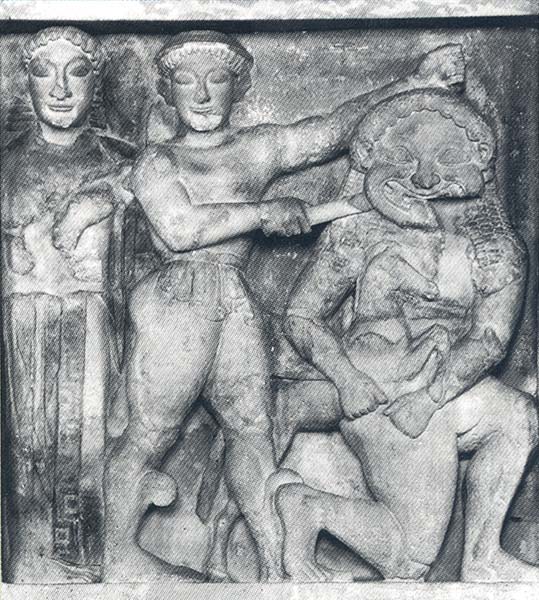If Looks Could Kill: Medusa
Sidebar to: Gorgon Excavated at Dor

She is one of the most memorable figures from ancient mythology: A snake-haired monster so hideous that anyone who beholds her is turned to stone. According to the Roman poet Ovid (43 B.C.-17 A.D.), Medusa was once a maiden renowned for her beautiful hair. She was deflowered by the sea-god Poseidon in a temple dedicated to the goddess Athene. Outraged, Athene exacted her revenge, changing Medusa’s flowing locks into a mass of hissing serpents.
Little else is recorded about Medusa, but her violent death at the hands of the hero Perseus is recounted in the Library, a mythological compendium once wrongly attributed to Apollodorus of Athens (its real author is unknown). Equipped with winged sandals, a sickle and a cap that rendered him invisible, Perseus flew to the distant home of Medusa and her two sisters (the three were known as the Gorgons) and found them asleep. Averting his gaze from the monsters, Perseus looked into his shield, saw Medusa’s reflection, and swiftly beheaded her. From her headless body sprang Chrysaor and Pegasus, the winged horse, both fathered by Poseidon.
Perseus, still invisible, was chased by the remaining two Gorgons, but he escaped with Medusa’s head and presented it to Athene. Athene then placed the head at the center of her breastplate for protection.
Already a library member? Log in here.
Institution user? Log in with your IP address.

